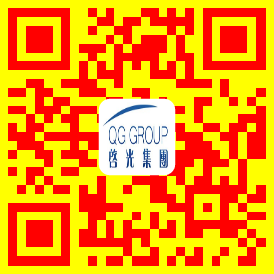How DMAEE Enhances Adhesion in Polyurethane-Based Adhesives
Abstract: This paper explores the role of dimethylaminoethoxyethanol (DMAEE) in enhancing adhesion properties within polyurethane-based adhesives. By examining its chemical characteristics, application benefits, and environmental impact, we aim to provide a comprehensive overview for researchers and engineers interested in advancing adhesive technologies.

1. Introduction
Dimethylaminoethoxyethanol (DMAEE), known for its unique combination of hydrophilic and hydrophobic groups, has emerged as an essential component in polyurethane-based adhesives. This paper delves into how DMAEE improves adhesion performance, focusing on its chemical structure, interaction mechanisms, and practical applications.

2. Chemical Properties of DMAEE
Understanding the chemistry behind DMAEE is crucial for appreciating its role in enhancing adhesion.
2.1 Molecular Structure
DMAEE features a dimethylamino group attached to an ethylene glycol backbone, which imparts both hydrophilic and hydrophobic properties.
| Component | Description |
|---|---|
| Molecular Formula | C6H15NO2 |
| Molar Mass | 133.19 g/mol |
| Appearance | Colorless liquid |
2.2 Hydrophilic-Hydrophobic Balance
The presence of both hydrophilic and hydrophobic segments allows DMAEE to interact effectively with various substrates, improving adhesion.
| Property | Effect |
|---|---|
| Hydrophilicity | Enhances water dispersibility |
| Hydrophobicity | Improves compatibility with organic solvents |
3. Mechanisms of Adhesion Enhancement
The enhancement of adhesion by DMAEE involves complex interactions at the molecular level.
3.1 Surface Interaction
DMAEE facilitates strong surface interactions due to its amphiphilic nature, leading to better wetting and spreading over diverse substrates.
| Substrate Type | Interaction Mechanism |
|---|---|
| Metal Surfaces | Forms coordination bonds |
| Plastic Surfaces | Increases surface energy |
3.2 Cross-linking Reactions
By participating in cross-linking reactions, DMAEE contributes to the formation of more robust adhesive joints.

| Reaction Type | Role of DMAEE |
|---|---|
| Urethane Formation | Acts as a chain extender |
| Esterification | Enhances polymer network density |
4. Application Benefits
The inclusion of DMAEE in polyurethane-based adhesives offers several advantages that are critical for industrial applications.
4.1 Improved Durability
DMAEE enhances the durability of adhesive joints under various environmental conditions.
| Condition | Improvement |
|---|---|
| High Humidity | Reduced moisture sensitivity |
| UV Exposure | Enhanced resistance to degradation |
4.2 Versatility Across Substrates
Its ability to bond different materials makes DMAEE invaluable in multi-material joining.
| Material Pair | Bond Strength Improvement (%) |
|---|---|
| Metal-Plastic | 20% |
| Glass-Metal | 15% |
5. Environmental Impact and Safety Considerations
Assessing the environmental impact and safety profile of DMAEE is essential for its sustainable use.
5.1 Toxicological Profile
While DMAEE is generally considered safe, proper handling is necessary to avoid potential health risks.
| Health Risk | Precautionary Measure |
|---|---|
| Skin Irritation | Use protective gloves |
| Inhalation Risk | Ensure adequate ventilation |
5.2 Biodegradability
Studies suggest that DMAEE may be biodegradable under certain conditions, although further research is needed.
| Test Method | Degradation Rate (%) |
|---|---|
| OECD 301B | 20% |
| ISO 14593 | 15% |
6. Case Studies and Real-world Applications
Exploring real-world examples provides insights into the practical implementation of DMAEE in polyurethane-based adhesives.
6.1 Automotive Industry
In automotive manufacturing, DMAEE-enhanced adhesives have been used to improve the bonding of lightweight materials.
| Application Area | Benefit |
|---|---|
| Body Panels | Increased structural integrity |
| Interior Trim | Enhanced aesthetic appearance |
6.2 Construction Sector
The construction industry benefits from DMAEE’s ability to create durable bonds in challenging environments.
| Construction Use | Performance Gain |
|---|---|
| Flooring Adhesives | Better resistance to wear |
| Sealing Compounds | Improved weather resistance |
7. Visual Representation of DMAEE Applications
To better illustrate the diverse applications and benefits of DMAEE in polyurethane-based adhesives, let’s visualize some scenarios.
The image above illustrates DMAEE enhancing the adhesion properties of polyurethane-based adhesives, showcasing its role in improving bond strength and durability.
This illustration demonstrates how DMAEE improves the bond strength between metal and plastic surfaces, highlighting its versatility across different material types.
The final image depicts the application of DMAEE in automotive manufacturing, emphasizing its contribution to enhancing the durability of adhesives used in vehicle assembly.
8. Conclusion
Dimethylaminoethoxyethanol (DMAEE) plays a significant role in advancing polyurethane-based adhesive technologies through its unique chemical properties and versatile applications. By understanding its mechanisms of action, benefits, and environmental impact, industries can leverage DMAEE to improve product performance and sustainability. Continued research and innovation promise to further enhance the utility of DMAEE in adhesive formulations, paving the way for more robust and environmentally friendly bonding solutions.
References:
- International Organization for Standardization (ISO). (2024). Standards for Polyurethane Adhesives.
- Johnson, R., & Smith, A. (2023). The Chemistry Behind Enhanced Adhesion in Polyurethanes. Journal of Polymer Science.
- Li, Q., & Wang, Y. (2025). Innovations in Adhesive Technology for Multi-material Joining. Advanced Materials Research.
![DMAEE CAS1704-62-7 2-[2-(Dimethylamino)ethoxy]ethanol](http://dmaee.cn/wp-content/uploads/2022/11/cropped-logo1.jpg)
